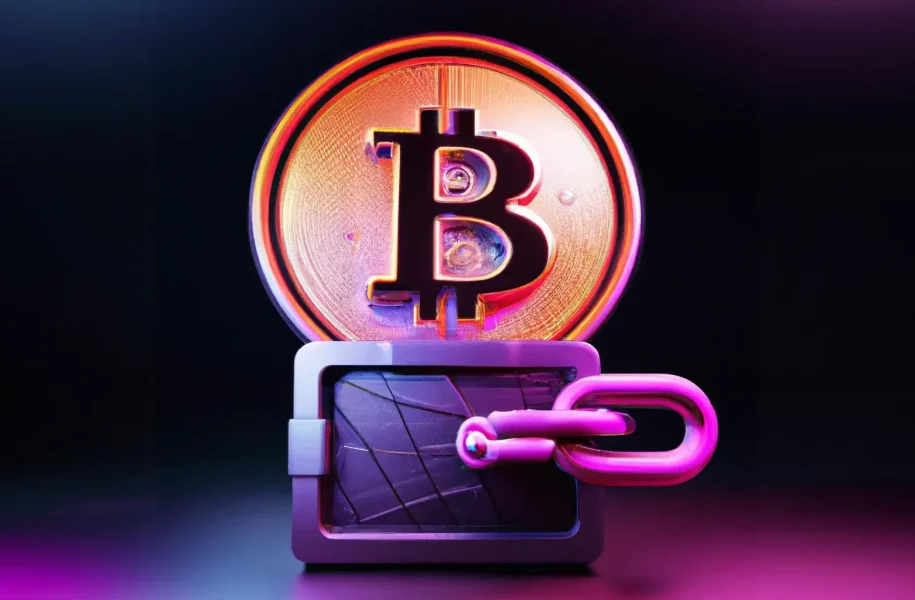How to Protect Your Crypto Portfolio
Investing in cryptocurrency comes with its advantages and disadvantages. While you can make a serious profit from your portfolio, there are lots of risky factors every person should consider before diving in.

Now, as we all know, the crypto space is where many bad actors try to profit from unsuspecting investors – both newbies and veteran traders. The difference is that the more experience you gain, your assets will be safer as you learn how to protect yourself. Being overly cautious will always benefit you in the long term. That is why you should always invest smartly and minimize the risks.
Here are a few tips on how to keep your money safe
-
DON’T OVERREACH
The first rule of investing is to invest only in things you understand: If you don’t know how it works, then take some time to do further research before deciding whether to invest.
-
DYOR
Do your research! Every person who has an affinity for investing will give you this advice.
This applies to everyone; whether you are new to crypto or have been around for a while, due diligence is a must. Take some time to research the project that you are interested in thoroughly. Go online and browse for reviews, complaints, etc. And, of course, be cautious, as many reviews could be fabricated from fake profiles. Don’t skim – read everything.
-
KEEP YOUR SEED PHRASE SAFE
Keep your seed phrase private from everyone. Don’t underestimate blockchain’s security – if no one has access to your seed phrase, it is almost impossible for someone to steal your funds.
Keep it in a place that only you can access. Hardware wallets are highly recommended because you are the only one that can control the assets.
If someone asks you to share the seed phrase of your crypto wallet, to participate in an investment opportunity, or to “restore” or “load” your account, it’s a scam to steal your holdings.
Holding your investment on exchanges is risky because what will happen if the company goes into a liquidity crisis? You will most likely lose your money. A prime example is the crash of FTX, the second-largest crypto exchange at the time. You also must consider exploits and the wide variety of scams circulating the space. While some exchanges like Binance add funds that act as layers of security for the customer’s assets, others don’t, and you can lose everything you own.
Exchanges are designed for active traders. A word of advice if you are there to invest – transfer your assets into cold storage, especially if you are in it for the long run.
-
IGNORE PRESSURE TACTICS
Every once and a while, you will receive emails and direct messages on social media platforms with discounts and bonuses if you act now. Or someone could be pretending to be a friend in an emergency who needs money urgently.
Sales pitches like “Invest now!” and similar fishy cliches should always be considered a red flag. Messages like “Send me 1 ETH, and you will be rewarded with 1 BTC (or 10 ETH)” should be ignored and deleted.
Many of the investment opportunities in the crypto realm are scams. You may see crypto offers that require an up-front fee. Reject them all, and especially avoid “offers” involving a fee to be paid in cryptocurrency. As we mentioned above, before investing anything, you need to check the company’s website to find out how they protect their customers and look for reviews from other investors.
Whether it is a “pump and dump” scheme or a tasteless “Send me crypto” message, you should delete it from your inbox and carry on.
-
CHECK THE URL
Many of the crypto project’s websites can be mirrored and used with malicious intent. Always check the URL to avoid falling for a scam impersonating something that it’s not.
Many phishing scammers copy the URL of legitimate sites and swap out letters or numbers. You also want to ensure the site is secure, so look for the lock symbol next to the URL.
Remember to turn on your antivirus software. Most AVs look out for phishing scams on your behalf and block malicious URLs.
You can also use well-known price-tracking websites for cryptocurrencies, such as CoinMarketCap or CoinGecko. Search for the specific cryptocurrency and look for the link to their official website.
Whenever you receive ANY messages, whether via email, text, chat, or DM, always check the spelling of the URLs in any links before you click! And watch out for URL redirects, where you’re subtly sent to a different website with a similar design.
-
USE MULTI-FACTOR AUTHENTICATION
Use multi-factor authentication on your crypto wallet to keep the bad guys out. It’s not a sure-fire solution, as we learned after the Coinbase hack, but it gives you a fighting chance against many attackers. Extra layers of security can’t hurt you.
-
DON’T TRUST PROMISES AND GUARANTEES
If someone “promises” high returns, that’s a scam.
And if they “guarantee” returns, that’s also a scam.
Legitimate investments that can guarantee high returns with no risk do not exist. You’re better off trying to find a pot of gold at the end of a rainbow.
Types of scams
Giveaway scams
Many scammers in the cryptocurrency space use clever messaging tactics that look like valid social media accounts to lure out potential victims with “once-in-a-lifetime” opportunities, offering instant and “guaranteed” returns. The fake sense of urgency is one of the red flags you should watch out for.
Pump and dump
In a pump and dump scheme, fraudsters usually spread false or misleading information to create a buying frenzy that will “pump” up the price of a token and then “dump” it by selling their coins at the inflated price. These price crashes could happen within minutes. Typically scammers use platforms such as Twitter, Facebook, or Telegram to shill their projects.
Phishing scams
Phishing is a malicious attempt to acquire sensitive information such as username, password, and security keys (which are required to access the funds in your wallet) by the perpetrator assuming someone else’s identity. It most often starts with creating a duplicate of an existing web page of a major exchange or crypto service provider. Usually, you receive an email where the recipient is required to share his private information.
Blackmail and extortion
Blackmailers send emails that claim to have a record of adult websites visited by the user and threaten to expose them unless they share private keys or send cryptocurrency to the scammer.
Fake apps
When downloading an app, always use official app distribution platforms, also known as “app stores” – Apple App Store for iOS devices and Google Play Store for Android users. Fake apps are pretty common, and although they are quickly found and removed, you can still fall prey to the scheme.
Fake endorsements
It is not uncommon to see scammers pretending to be influencers, known business people, and celebrities to attract the unknowing investor. These scams sometimes include selling cryptocurrencies to new investors that don’t exist. Sometimes it is hard to distinguish the fake from the real as many scammers’ websites and profiles could look 100% legit. Most fake endorsements use famous people like Elon Musk, Changpeng Zhao, and Vitalik Buterin to attract potential victims.
Fake websites
As we already mentioned, scammers can use sophisticated methods to copy the website of a popular cryptocurrency trading platform and try to drain your wallet. These sites have slightly different domains, but the design is almost indistinguishable.
Cloud mining scams
Cloud mining refers to companies that allow you to rent mining hardware they operate in exchange for a fixed fee and a share of the revenue you will supposedly make. In theory, this allows people to mine remotely without buying expensive mining hardware. However, many cloud mining companies are scams or, at best, ineffective – in that you lose money or earn less than was implied.
Fake ICO
An initial coin offering or ICO is a process or event in which a company (especially a start-up) attempts to raise money from future users by selling a new cryptocurrency. During the ICO period, you can typically buy the token at a discount in exchange for adding liquidity by sending coins like BTC or any other popular crypto.
Several ICOs have turned out to be fraudulent, with criminals going to elaborate lengths to deceive investors, such as renting fake offices and creating high-end marketing materials.
How to spot cryptocurrency scams
Nothing is free: Investment opportunities promising free money are likely fake.
Guaranteed returns: Noone can guarantee future returns because investments can go up and down. Any crypto offering that promises you will make guaranteed money is a red flag.
Too much marketing: Everyone promotes their business. But using heavy marketing – online advertising, paid influencers, offline promotion, and so on – usually looks shady in the cryptocurrency space. This is designed to reach as many people as possible in the shortest time possible – to raise money fast. Extravagant claims without anything backing them up should make you think twice before investing – again, DYOR!
Obscure whitepaper: Having a whitepaper is an absolute must for every project. It is one of the main aspects of an ICO. How cryptocurrency works and the design of the project should all be explained in the whitepaper. If the whitepaper seems too obscure or doesn’t make sense – or worse, if it doesn’t exist – be careful, this potentially could be a scam.
Unnamed team: With most investment businesses, it should be possible to find out who the key people behind it are. Usually, this means easy-to-find biographies of the people who run the investment, plus an active presence on social media. If you can’t find out who is running a cryptocurrency, be cautious.



